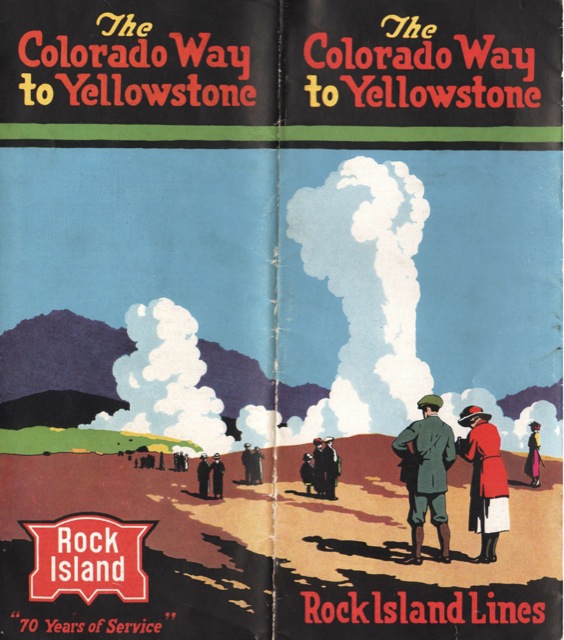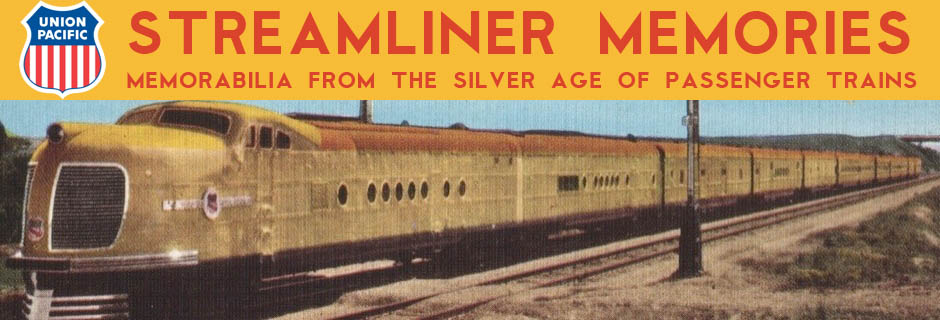This 1923 brochure makes the difficult case that people should take the Rock Island to Denver on their way to Yellowstone National Park. From Denver, travelers could take Rock Island “connections . . . to any of the four Yellowstone National Park gateways, (Yellowstone station, Gardiner, Cody, Lander).”

Click to download a 10.1-MB PDF of this 16-page brochure.
Yellowstone Station means West Yellowstone, which was accessed via Union Pacific. Gardiner was accessed via Northern Pacific but, like the Cody gateway, would require from Denver a trip over the Burlington. Lander, the western-most extension of the Chicago and North Western, was perhaps the least-used rail gateway to Yellowstone and was rarely advertised even by the North Western, which apparently built to lander in 1906 more to server settlers of a newly opened Shoshone Indian Reservation than tourists.
In other words, no matter which gateway people chose into Yellowstone, taking the Rock Island required making what were probably poor connections at Denver to another railroad that they could have taken from Chicago. Travelers starting in or passing through St. Louis might do a bit better with Rock Island, but they could also take the Wabash to Kansas City where they would make what were probably better connections to the Burlington or Union Pacific. Nevertheless, it is interesting to see how Rock Island attempted to jump on the Yellowstone bandwagon despite the railroad’s remote connections to the park.
